#databreach
Text
Not one Australian company has been fined despite 1,748 data breaches in 2 years
#australia #australian
#databreach#data breach#privacy#invasion of privacy#ausgov#politas#auspol#tasgov#taspol#australia#fuck neoliberals#neoliberal capitalism#anthony albanese#albanese government#class war#eat the rich#eat the fucking rich#information#information technology#infotech#morals#ethics#fuck the police#fuck the patriarchy#fuck the supreme court#fuck the tories#fuck the system#fuck the gop#safety#internet
6 notes
·
View notes
Text
Hacker Breach Exposes 23andMe’s Customers’ Data

Genetic Testing Giant Confirms Massive Security Compromise
A staggering breach has rattled the foundations of 23andMe, the renowned genetic testing company, as it confirms unauthorized access to nearly seven million user profiles. A spokesperson disclosed to CNN on Tuesday that the breach encompassed sensitive details such as ancestry reports, zip codes, and birth years, significantly impacting a subset of the company’s extensive user base.
The Scale of the Breach
The unsettling revelation came to light through a filing to the Securities and Exchange Commission (SEC) on Friday, where 23andMe indicated that approximately 0.1% of its user accounts, approximately 14,000 profiles, fell victim to the cyber intrusion. However, subsequent investigations unveiled a more substantial impact, with hackers infiltrating around 5.5 million profiles employing the company’s DNA Relatives feature.
Extent of Compromised Information
Notably, hackers also managed to access a subset of family tree data linked to 1.4 million DNA Relatives profiles, raising concerns about the depth and breadth of compromised personal information. Engadget, a prominent tech news outlet, initially shed light on the broader implications of this extensive security breach.
23andMe faces data breach: Over 7 million users exposed to hackers
youtube
Ongoing Cybersecurity Woes
This incident adds 23andMe to the roster of major U.S. corporations grappling with severe cybersecurity breaches affecting a larger populace than initially acknowledged. Just recently, Okta, an identity management firm, acknowledged a data breach impacting all users within its customer support system, a figure significantly higher than initially reported.
Modus Operandi: Credential Stuffing
The method of intrusion employed by the hackers has been identified as ‘credential stuffing.’ Leveraging old usernames and passwords obtained from other platforms, this rudimentary yet effective technique facilitated unauthorized access to numerous 23andMe customer accounts.
Company’s Response and Measures Taken
In response to the breach, 23andMe embarked on a comprehensive investigation aided by third-party forensic experts. Despite declining to disclose the perpetrators, the company is diligently notifying affected customers, complying with legal obligations.
A statement posted on the company’s website outlined measures to bolster data protection, mandating password resets for existing customers and implementing two-step verification for both new and existing users.
As concerns over data security and privacy amplify, this breach underscores the pressing need for stringent measures to safeguard sensitive personal information in an increasingly digitized world.
The ramifications of such a breach extend far beyond the compromised data itself. Users are now grappling with potential identity theft, privacy infringement, and the misuse of their genetic information. This breach has reignited conversations about the ethical responsibilities of companies dealing with highly personal data and the imperative to fortify cybersecurity protocols.
In the wake of this breach, regulatory bodies and lawmakers are likely to intensify their scrutiny of companies handling sensitive user data, potentially leading to stricter compliance standards and regulations aimed at fortifying cybersecurity measures and protecting consumer privacy.
As 23andMe continues its damage control and endeavors to rebuild trust, the cybersecurity landscape faces renewed challenges, emphasizing the criticality of proactive measures to thwart malicious cyber threats and safeguard user information from similar breaches in the future.
Curious to learn more? Explore our articles on Enterprise Wired
#DataBreach#Cybersecurity#PrivacyConcerns#23andMeHack#SecurityAlert#DigitalPrivacy#CyberThreats#Youtube
2 notes
·
View notes
Text
Cyber Security News
2 notes
·
View notes
Text

This post compares Bill C27 to Bill C11 and GDPR to CPPA
On June 16, 2022, the federal government took a second shot at a complete overhaul of the private sector privacy law regime that both protects individuals’ personal information and regulates organizations’ privacy practices. Bill C27: Digital Charter Implementation Act, 2022 will implement the Consumer Privacy Protection Act (CPPA) to replace the federal Personal Information Protection and Electronic Documents Act (PIPEDA), which has regulated the collection, use and disclosure of personal information in the course of commercial activity in Canada since 2001. While updated a number of times since it took effect, the broad consensus is that PIPEDA is in need of a general overhaul. The government’s first shot to do so was the 2019 Bill C-11: Digital Charter Implementation Act, 2019. However, Bill C-11 languished in Parliament, ultimately dying with the federal October 2019 federal election. The consensus at the time was that Bill C-11 required revision before it was passed in any event (though it did give organizations a sense of what to expect). Bill C27 is very similar, though not identical, to Bill C-11, and creates three new laws:
The Consumer Privacy Protection Act, the main privacy law that will replace PIPEDA, as did Bill C-11.
The Personal Information and Data Protection Tribunal Act, creating a new tribunal to replace the current role of the Federal Court under PIPEDA and enabling the new penalty regime, as did Bill C-11.
The Artificial Intelligence and Data Act, much of which will depend on regulations that haven’t yet been released so it’s unknown what it will look like. This is a new addition to Bill C27 compared to Bill C-11 and doesn’t exactly fit with the CPPA/Tribunal regulatory framework.
Here’s a look at 12 key differences between the regulation of the collection, use and disclosure of personal information under PIPEDA, and under the newest version of the CPPA.
1. Complete Restructuring
The Bill C27 version of the CPPA, as was the Bill C-11 version, is a completely different structure compared to PIPEDA.
CSA Model Code. PIPEDA included a schedule taken from the Canadian Standards Association (CSA) Model Code for the Protection of Personal Information, and essentially said, “follow that”. In contrast, the CPPA, similar in structure to the provincial Personal Information Protection Acts of Alberta and British Columbia, incorporates the CSA Model Code’s 10 principles in the body of the actual Act rather than in a schedule. The 10 principles in the new Act are largely unchanged, except the language is necessarily modified so it’s more “statutory” compared to that typically in an industry standards document. This isn’t surprising; though written in the 90’s, the principles were based on the Organization for Economic Co-operation and Development (OECD) guidelines, and versions of all the ten principles exist in all modern privacy laws. What is changed, however, is the additional detail about what organizations must do to comply with the law.
Privacy Management Program. A prime example is principle 1 of the CSA model code. This required that an organization “implement policies and practices to give effect to the CSA Model Code principles”. However, section 9 of the new CPPA explicitly requires that an organization implement and maintain a privacy management program that “includes the policies, practices and procedures the organization has put in place to fulfill its obligations under this Act”. The CPPA further sets out particular policies, practices and procedures the program must cover and the factors the organization must take into account in developing its program. The organization must provide its privacy management program to the Privacy Commissioner on request.
Documenting Consent. Another example is with respect to documenting consent. The CSA Model Code implicitly required organizations to record and document the purposes for which they collect, use or disclose any personal information. The new CPPA expressly spells this requirement out. In addition, section 15 of the CPPA sets out in detail what’s required for consent to be valid. Essentially, it requires not only identifying the purposes for which the personal information will be used, but also communicating in plain language: how the information will be collected; the reasonably foreseeable consequences of the proposed collection, use and disclosure; and what types of information will be disclosed and to whom.
2. Consequences
The 2022 version of the CPPA will carry significant consequences for those that breach it.
Administrative Monetary Penalties. Bill C27 will implement significant penalties for non-compliance with the CPPA – though slightly different from those proposed in Bill C-11. The 2022 version of the CPPA authorizes a maximum administrative monetary penalty in one case of the higher of $10M and 3% of the organization’s gross global revenue in its financial year before the one in which the penalty is imposed. The first version of the CPPA would have authorized administrative monetary penalties and fines of up to $25M or 5% of global revenue, whichever is higher. Currently, PIPEDA only authorizes penalties for violation of the Digital Privacy Act’s data breach response obligations, and those are still markedly lower than those under the CPPA: the maximum fine for breaching the Digital Privacy Act is $100,000 per violation (though if there were multiple violations, which would not be uncommon, the fines could add up).
Quasi-Criminal Prosecutions. The CPPA also provides for quasi-criminal prosecutions that can carry even higher financial consequences. The Crown prosecutor can decide whether to proceed by way of either: an indictable offence, with a fine not exceeding the higher of $25M and 5% of the organization’s gross global revenue; or a summary offence, with a fine not exceeding the higher of $20M and 4% of the organization’s gross global revenue. If there is a prosecution, the usual rules of criminal procedure and fairness, like the presumption of innocence and proof beyond a reasonable doubt, apply.
3. Enlarged Privacy Commissioner Role & Powers
The most significant difference between PIPEDA and the CPPA, both in its Bill C-11 and Bill C27 forms, reflects what many privacy advocates have called for: a move away from the traditional ombuds model. Under the CPPA, the Privacy Commissioner is no longer an ombuds with a focus on nudging companies to compliance and solving problems for individuals; it has veered strongly towards enforcement – and a much more adversarial regime. As with PIPEDA, enforcement starts either with a complaint by an individual, or the Commissioner can initiate a complaint of their own accord. However, from that point on the process will change.
Investigation. The CPPA sets out more circumstances than did PIPEDA in which the Commissioner can decline to investigate. After the investigation, the Commissioner can refer the matter to an inquiry.
Inquiries. Inquiries have many more procedural protections for fairness and due process than under PIPEDA’s ad hoc system. For example, the CPPA guarantees each party a right to be heard and to be represented by counsel. While in practice this has typically occurred, it will be required under the CPPA. In addition, the CPPA requires the Privacy Commissioner to develop rules of procedure and evidence, make then public, and follow them.
Orders. At the end of the inquiry, the Commissioner can issue compulsory orders of measures a party must take to comply with the CPPA or orders it stop doing something that contravenes the CPPA. Under PIPEDA, the Privacy Commissioner only has the power to make recommendations to a breaching organization. As under PIPEDA, the Commissioner can also continue to name and shame violators. Notably, the Commissioner can’t itself levy any penalties, but they can recommend that the new Privacy and Data Protection Tribunal do so.
4. New Personal Information and Data Protection Tribunal
Bill C27 implements a new, specialized “Personal Information and Data Protection Tribunal” to replace the current role of the Federal Court under PIPEDA – with greater powers.
Appeals. The CPPA will allow organizations accused of violating the CPPA a new right to appeal the Privacy Commissioner’s findings, interim orders and final orders. Under PIPEDA, only complainants and the Commissioner can seek a hearing in the Federal Court after the Commissioner has issued their finding.
Role. The Tribunal’s role is to determine whether any penalties recommended by the Privacy Commissioner are appropriate. It also hears appeals of the Privacy Commissioner’s findings, interim or final orders, and decisions not to recommend any penalties be levied. Under PIPEDA, a Federal Court hearing after the Commissioner has issued their finding is “de novo” (new): the Court starts fresh and makes its own findings of fact and determinations of law, based on the parties’ submissions. In contrast, the Tribunal will review the Commissioner’s decision under a stricter standard: “correctness” for questions of law; and “palpable and overriding error” for questions of fact or questions of mixed law and fact. Practically, this means that while organizations that collect, use or disclose personal information will now have the opportunity to appeal the Commissioner’s decision, that appeal will be subject to a stricter standard of review. The Tribunal’s decisions are subject to limited judicial review before the Federal Court.
Jurisdiction. While the Tribunal’s jurisdiction is currently limited to the CPPA, it’s expected that will grow. For example, the “online harms” consultation of the last year anticipated that the Tribunal would also review determinations made under the relevant legislation.
Members. Bill C27 requires that at least three of the Tribunal members have expertise in privacy.
5. Global Application
CPPA applies to the collection, use and disclosure of personal information during commercial activity and to employee information of federally regulated organizations. The Bill C27 version of CPPA also applies to all personal information an organization collects, uses, or discloses interprovincially or internationally. In the past, the federal Privacy Commissioner asserted this was implied under PIPEDA; it’s now expressly stated. There are some carve-outs for government institutions under the federal Privacy Act, for personal or domestic, journalistic, artistic and literary uses of personal information and for business contact information. This expanded application reflects the increased digitization and globalization of the economy, that knows no border, and that the COVID-19 Pandemic accelerated. However, there are two problematic aspects to this expansion:
Breadth. It’s not limited to commercial activity, so an argument could be made that it applies to non-commercial or employee personal information (which would otherwise be beyond the scope of the law) that crosses borders.
Redundancy & Duplication. For organizations with operations in Quebec, British Columbia and in Alberta (the only Canadian provinces with provincial general privacy legislation that’s substantially like PIPEDA), it must now comply not only with the substantially similar provincial privacy laws of both provinces, but also with the CPPA, when it moves data from one province to another.
CPPA fails to fill the cross-border gap that also exists under PIPEDA: it doesn’t expressly extend to personal information imported into Canada from the European Union under an EU adequacy finding. Under the General Data Protection Regulation (GDPR), organizations can only export from the EU personal data to countries the EU determines have adequate protections. So, an EU adequacy finding still only applies to the extent the CPPA, as does PIPEDA, covers. A clear extension of the CPPA to personal information imported from Europe would have been beneficial to ensure confidence that the adequacy finding from the EU, present and future, applies across the board.
6. Statutory Right of Action
Bill C27 version of the CPPA creates a new privacy breach legal claim. An individual can sue an organization (within two years of the Commissioner’s finding) for compensation where the Privacy Commissioner decides the organization violated the individual’s privacy under the CPPA, and the Personal Information and Data Protection Tribunal upholds that finding. While PIPEDA limits any action to recover compensation for a violation of privacy to the Federal Court, the CPPA will also allow individuals to file such actions in the superior court of a province. However, the wording of the CPPA makes it unclear whether a violator is also exposed to class action liability.
7. Data Portability & Deletion
Both versions of the CPPA provide for new individual rights of data portability and deletion. Consumers can require an organization to transfer their data to another organization (subject to regulations that aren’t yet available), likely a boon to open banking. Bill C27 version of the CPPA narrows the data portability provisions compared to that in the Bill C-11 version by requiring that data portability be connected to a “data mobility framework”. Individuals can also require that an organization delete the personal information it’s collected about them, subject to some limitations, in what appears to be a limited form of the “right to erasure”.
8. Algorithmic Transparency
Bill C27 CPPA requires algorithmic transparency. Individuals will have the right to require an organization to explain how an automated decision-making system made a prediction, recommendation or decision about the individual that could have a significant impact on them.
9. Collection, Use & Disclosure Without Consent
When can an organization collect, use and disclose personal information without consent.
Certain Business Activities. The CPPA allows collection and use without consent for certain business activities where it would reasonably be expected to provide the service, for security purposes, for safety, or for other prescribed activities. Notably, an organization can’t use this exception where the personal information is to be collected or used to influence the individual’s behaviour or decisions.
Legitimate Interest. There’s also a “legitimate interest” exception to consent for collection, use and disclosure requiring an organization to document any possible adverse effects on the individual, mitigate them, and finally weigh whether the legitimate interest outweighs any adverse effects. However, it’s unclear how “adverse effects” will be measured.
Consent Withdrawal & Disposal. The CPPA allows an individual to withdraw consent and require that an organization dispose of their information; notably, disposal includes deletion and rendering the data anonymous.
10. No Change to Access by Law Enforcement (Yet)
Surprisingly, the exceptions that can apply when the government or policing authorities seek personal information from an organization remain the same as those in section 7(3) of PIPEDA. Section 44 says,
An organization may disclose an individual’s personal information without their knowledge or consent to a government institution or part of a government institution that has made a request for the information, identified its lawful authority to obtain the information and indicated that the disclosure is requested for the purpose of enforcing federal or provincial law or law of a foreign jurisdiction, carrying out an investigation relating to the enforcement of any such law or gathering intelligence for the purpose of enforcing any such law.
11. Anonymizing & De-Identifying Data
As did the Bill-C11 version of the CPPA, the Bill C27 version of CPPA makes new rules around the de-identification of data – including allowing for organizations to use an individual’s personal information without their consent in order to de-identify their data – but appears to limit other uses of de-identified data. Under certain circumstances, organizations can also disclose de-identified data to public entities for socially beneficial purposes. However, the CPPA now takes an interesting approach to anonymous and de-identified data by officially creating two separate categories:
Anonymize. To anonymize is defined as “to irreversibly and permanently modify personal information, in accordance with generally accepted best practices, to ensure that no individual can be identified from the information, whether directly or indirectly, by any means.” So, effectively there’s no reasonable prospect of re-identification. The CPPA doesn’t regulate anonymous data because, by definition, there’s no reasonable prospect of re-identification.
De-identify. To de-identify data means “to modify personal information so that an individual cannot be directly identified from it, though a risk of the individual being identified remains.” So, you’re essentially using data with the identifiers removed. The CPPA does regulate de-identified data and generally prohibits attempts to re-identify it. It also says that in some cases, de-identified data can be used or even has to be used in place of fully identifiable personal information.
12. Codes of Practice
As did the Bill C-11 version of the CPPA, the Bill C27 CPPA introduces the concept of “Codes of Practice”. Notwithstanding the requirement for a privacy management program, the CPPA allows private organizations to establish a “code” and internal certification programs for complying with the CPPA, which the Privacy Commissioner will approve. Once approved, this “code” will effectively establish the organization’s legal compliance obligations.
Let's take a closer look at where GDPR and CPPA differ and converge. (simplified)
We will list where the CPPA and GDPR intersect or diverge. Under the CPPA, the federal privacy commissioner has the power to investigate, and prosecute, if necessary, any organisation that violates the framework imposed by the CPPA, much like GDPR. The penalties are like those under GDPR (discussed later in this article).
Who is Impacted?
*If it is in both GC will appear, if it is in CPPA a C, GDPR a G
Any organisation that collects user data (Data Collector [DC]) must obtain the users (Data Provider [DP]) full consent, in how the data is collected, used or disclosed. (GC)
An individual would have the right to request access to their personal data that is held by any organisation. (GC)
The data must be deleted by the organisation, if requested to do so by the provider. (GC)
An employer should inform an individual upon request that is holds personal data about them, whether they have used it, and if so, how it has been used. The organisation should also inform the individual if the data has been disclosed. Exceptions apply. (C)
The CPPA is a part of Bill C27 in Canada, and is meant to work in conjunction with other legislations around privacy (PIPEDA) and spam (CASL). Also, as noted above, CPPA follows closely the rules of GDPR. The one critical aspect of this is that it takes user privacy more seriously, and breaches of that privacy, will be severely penalised.
The collection, use and disclosure of personal data requires overt consent. (GC)
Consent cannot be “implied” it needs to be explicit. (GC)
The purpose and use of the data must be explained in clear terms. (GC)
There are exemptions from consent under very specific circumstances (GC)
Transparency
There are increased transparency requirements imposed regarding the use of algorithms and AI systems, requiring organisations to justify why a specific prediction, recommendation or decision was made by an algorithm. Based on the collection of the data providers personal data. (C )
Personal Information and (De)Identifiers
It also includes much clearer guidelines on what makes up data identifiers and what can be done with regards to use or non-use regarding sensitive personal data. (GC)
Global Application
The CPPA, like the GDPR, clearly makes it the responsibility of the data consumer/organisation to ensure that data is used and stored properly. This includes data that is transferred to another organisation (regardless of the relationship between the organisations). This means that transferring data
inter-provincially or internationally have the same implications. (GC)
Penalties
CPPA:
Minimum: CAD 10 M or 3% of global revenue, whichever is greater.
Maximum: CAD 25 M or 5% of global revenue, whichever is greater.
GDPR:
Minimum: € 10 M or 2% of global revenue, whichever is greater.
Maximum: € 20 M or 4% of global revenue, whichever is greater.
Other Information
A consumer that has been affected by the violation of CPPA has the right to sue for damages with a private right of action. A two-year limit would apply, and proof must be clear on exactly how the organisation violated the CPPA. The exception is if the organisation was already fined by the CPPA.
Reporting of Breaches
Under GDPR an organisation must report a detected breach within 72 hours, or face penalties. From what we can find there is no such specific requirement under CPPA.
Our View
The two legislations are very similar and provide a great deal more protection for the consumer. They also make it clear that organisations are not owners of a consumer’s personal data. They are only custodians of it, with the express consent of the consumer,
which can be revoked at any time.
We work with organisations to protect data more strongly. That way if they do get breached, the breached data is unusable to the breacher. This means your data is safe.
2 notes
·
View notes
Text
Best Claims Services UK

Best advisories for for all your legal issues.We provides the best service for all type free claims at free of cost
https://legalassist.co.uk/
personalinjury
criminalinjuryclaims
housedisrepair
propertylaw
databreach
freerecovery
accidentalclaims
#personalinjury#criminalinjuryclaims#housedisrepair#propertylaw#databreach#freerecovery#accidentalclaims
0 notes
Text
UnitedHealth Ransomware Attack! Millions of Americans at Risk?
Get your OnePlus Watch 2
Disclosure: This post may contain affiliate links. By clicking on a link and making a purchase, I may earn a commission at no additional cost to you.
0 notes
Text
0 notes
Text
Securing the Digital Transformation Journey: Cybersecurity Pitfalls to Avoid

Embark on your digital transformation journey with confidence by learning about the top cybersecurity pitfalls to avoid.
Read More. https://www.sify.com/security/securing-the-digital-transformation-journey-cybersecurity-pitfalls-to-avoid/
0 notes
Text

Post: Change Healthcare stolen patient data leaked by ransomware gang | TechCrunch https://www.blaqsbi.com/5Pmc
0 notes
Text
Supply Chain Attacks
Supply chain attacks exploit vulnerabilities in interconnected businesses, posing significant risks to organizations. Attackers target weaker links to gain access to valuable data or deploy malicious software. Implementing proactive security measures like vendor risk management and incident response planning is essential for defending against these sophisticated cyber threats.
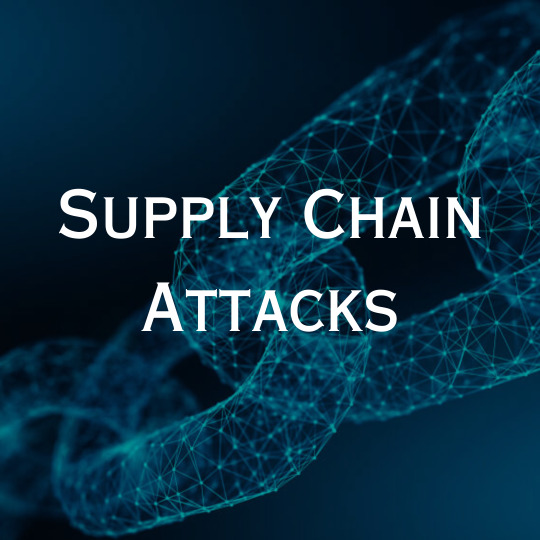
To Read More On Supply Chain Attacks.
#SupplyChainAttacks#CyberSecurity#InfoSec#CyberThreats#DataBreach#RiskManagement#CyberDefense#ThreatIntelligence#CyberAwareness#SecurityBreaches
0 notes
Text

#DatabaseSecurity#Cybersecurity#DataProtection#InformationSecurity#DataPrivacy#CyberDefense#CyberThreats#DataSecurity#SecuritySolutions#CyberSecurityMarket#DataEncryption#DataSecurityTrends#NetworkSecurity#ITSecurity#CyberSec#InfoSec#DataBreach#CyberAttacks#DataSecuritySolutions#DigitalSecurity
0 notes
Text
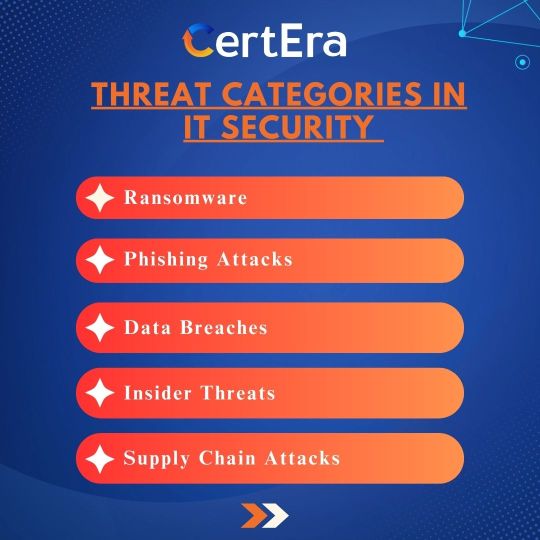

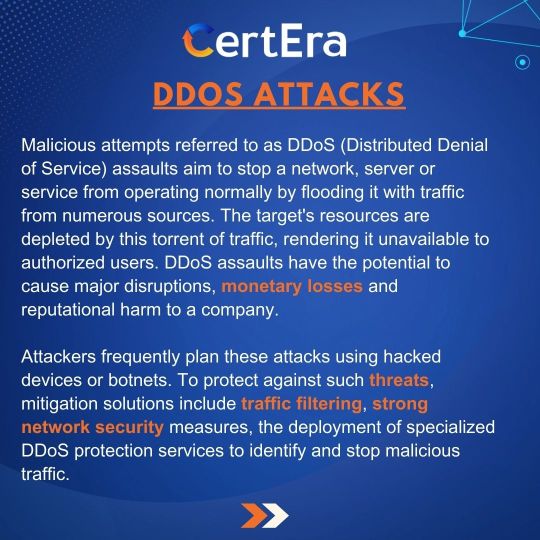
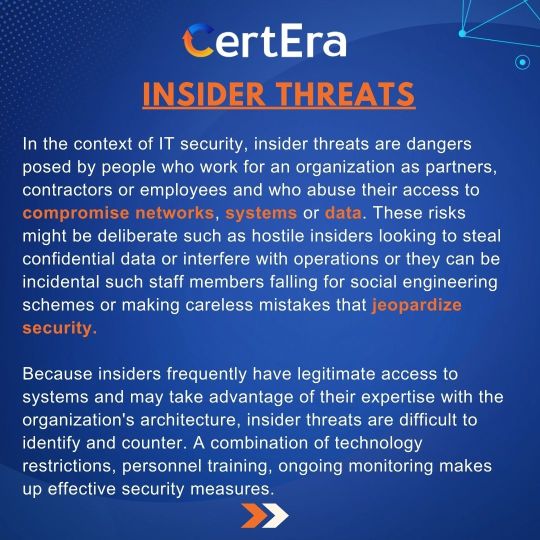
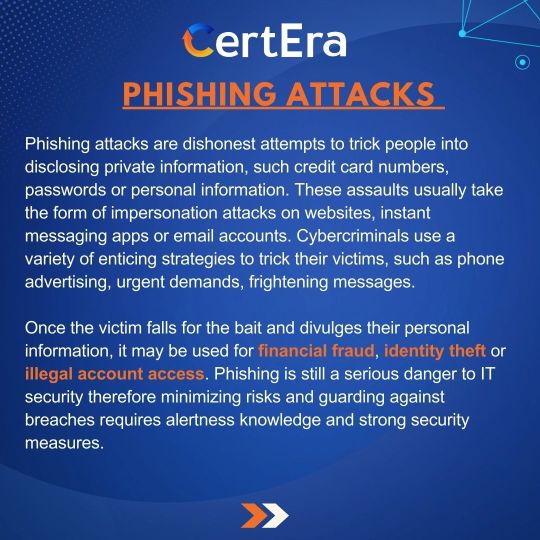

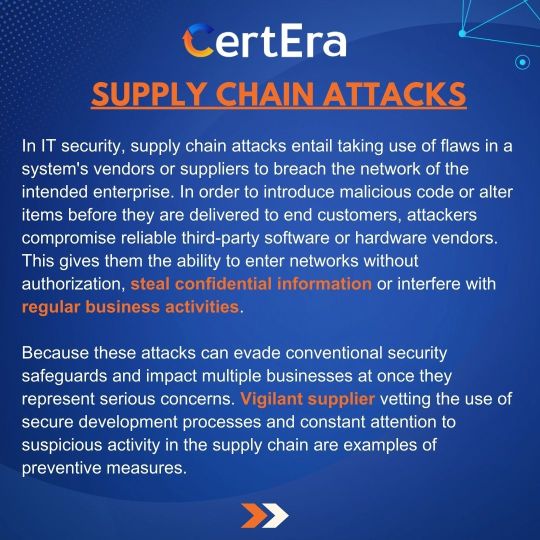

"Remain alert! To protect your digital environment, be aware of the various hazards lurking in IT security, from malware to phishing. Stay Safe and Protect Cyberspace.
For more information visit www.certera.co
#MalwareThreats#PhishingAttacks#Ransomware#DDoS#DataBreach#InsiderThreats#SocialEngineering#ZeroDayExploits
0 notes
Text
Nationwide Outage: UnitedHealth Group’s Cyberattack Disrupts Healthcare Data Transmission

Healthcare Network Faces Major Disruption
A cyberattack targeting a division of UnitedHealth Group Inc. has resulted in a nationwide outage of a crucial computer network responsible for transmitting data between healthcare providers and insurance companies. The incident, which occurred on February 21, has impacted Change Healthcare, a subsidiary of UnitedHealth and a key intermediary in the $1.5 trillion US health insurance market. The cyberattack has led to disruptions, rendering some pharmacies unable to process prescriptions.
Suspected Nation-State Cybersecurity Threat
UnitedHealth discovered the cyberattack when a “suspected nation-state associated cyber security threat actor” gained access to Change Healthcare’s systems. In response, the company promptly disconnected the affected systems from other parties, aiming to contain the potential damage. The incident raises concerns about the security of critical networks facilitating communication between healthcare entities and insurers.
Impact on the Health Insurance Market
Change Healthcare plays a vital role in the US health insurance market, operating the largest medical electronic data interchange (EDI) clearinghouse in the country. This network serves as a middleman, facilitating the exchange of claims information between insurance companies and healthcare providers. The disruption caused by the cyberattack has affected various organizations, with some pharmacies experiencing system issues and delays in processing prescriptions.
Response and Investigations
UnitedHealth is actively working with law enforcement and security experts to address the cyberattack. The company has emphasized that, as of now, the cyberattack and subsequent “network interruption” have only impacted Change Healthcare, assuring that all other systems are operational. The company, however, cannot provide a timeline for when the services will be restored. The incident underscores the growing challenges faced by healthcare organizations in safeguarding their critical systems from cyber threats.
The full scale of the disruptions caused by the cyberattack is not yet fully known. While UnitedHealth declined to provide further details, some affected organizations have disclosed information online. BlueCross BlueShield of Montana, for example, acknowledged that certain pharmacies are experiencing system issues due to the outage, potentially delaying the processing of medications.
The incident highlights the broader trend of cyberattacks targeting back-end IT software and services providers, resulting in cascading disruptions across various sectors. The healthcare industry, in particular, has become a significant target for cyber threats, emphasizing the need for enhanced cybersecurity measures to protect sensitive patient data and critical healthcare infrastructure.
#UnitedHealthGroup#cyberattack#healthinsurance#cybersecurity#healthcaresecurity#changehealthcare#Nationwide#HealthcareNetworking#DataBreach
0 notes
Text
Best Claims Services UK

Best advisories for for all your legal issues.We provides the best service for all type free claims at free of cost
https://legalassist.co.uk/
personalinjury
criminalinjuryclaims
housedisrepair
propertylaw
databreach
freerecovery
accidentalclaims
#personalinjury#criminalinjuryclaims#housedisrepair#propertylaw#databreach#freerecovery#accidentalclaims
0 notes
Link
https://bit.ly/3wllrV3 - 🔍 A recent leak on GitHub has unveiled documents allegedly showcasing China's offensive cyber operations, developed by the Chinese infosec company I-Soon. These operations reportedly target social media, telecom companies, and other organizations globally, with suspicion pointing towards orchestration by the Chinese government. #CyberSecurity #GitHubLeak 🌐 The leaked documents, analyzed by Taiwanese threat intelligence researcher Azaka Sekai, offer a deep dive into China's state-sponsored cyber activities, including spyware features for obtaining users' Twitter details, real-time monitoring, and more, although no official confirmation of their authenticity has been made. #CyberEspionage #StateSponsored 📱 According to the leak, the spyware targets Android and iOS devices, capable of gathering extensive sensitive data such as GPS locations, contacts, and real-time audio. Devices resembling portable batteries can inject spyware via WiFi, illustrating the sophisticated nature of these cyber tools. #DigitalPrivacy #Spyware 🔧 The documents detail various gadgets and software used in these operations, targeting users of Chinese social media platforms like Weibo, Baidu, and WeChat, and even extracting sensitive information from telecom providers in Kazakhstan. #TechSurveillance #SocialMediaSecurity 🌍 Victims identified in the documents include prestigious institutions and organizations such as Sciences Po in Paris, Apollo Hospitals in India, and government entities in China's neighboring countries, showcasing the broad scope of these cyber operations. #GlobalCyberThreats #DataBreach 💸 The leak also sheds light on the compensation of employees involved in developing the spyware, revealing an average salary of 7,600 RMB (about 1,000 USD) post-tax, highlighting the stark contrast between the employees' earnings and the gravity of their work.
#CyberSecurity#GitHubLeak#CyberEspionage#StateSponsored#DigitalPrivacy#Spyware#TechSurveillance#SocialMediaSecurity#GlobalCyberThreats#DataBreach#CyberWorkforce#EthicalHacking#cyberoperations#socialmedia#china#android#telecomcompany#realtimemonitoring#communication#document#operation#media#government#cybersecurity#doc
0 notes
Text
Navigating the Digital Landscape: A Cyber Data Breach Review with LDM Global in the USA

Introduction: In an era dominated by digital advancements, the protection of sensitive information has become a paramount concern for businesses worldwide. Cyber data breaches pose a significant threat, jeopardizing the confidentiality, integrity, and availability of critical data. This blog post will delve into the world of cyber data breaches, shedding light on the importance of robust cybersecurity measures and the role played by LDM Global in the USA.
Understanding Cyber Data Breaches: A cyber data breach occurs when unauthorized individuals gain access to confidential information, compromising its security. These breaches can lead to severe consequences, including financial losses, reputational damage, and legal repercussions. With the increasing frequency and sophistication of cyber attacks, organizations must adopt proactive strategies to safeguard their data.
The Landscape of Cybersecurity in the USA: The United States is a major target for cybercriminals due to its large and interconnected digital infrastructure. Government agencies, corporations, and individuals alike face constant threats from hackers seeking to exploit vulnerabilities. As the cybersecurity landscape evolves, staying ahead of emerging threats becomes imperative.
LDM Global: A Leader in Cybersecurity Solutions: LDM Global is a prominent player in the cybersecurity domain, offering comprehensive solutions to mitigate the risks associated with cyber data breaches. With a focus on eDiscovery, digital forensics, and data management, LDM Global assists organizations in identifying, analyzing, and responding to potential breaches effectively.
Key Services Provided by LDM Global:
eDiscovery Services: LDM Global's eDiscovery services enable organizations to efficiently identify and collect electronic evidence crucial for investigating cyber breaches. This helps in understanding the extent of the breach and aids in legal proceedings if necessary.
Digital Forensics: In the aftermath of a data breach, digital forensics plays a pivotal role in analyzing the incident. LDM Global employs advanced techniques to examine digital evidence, trace the origins of the breach, and determine the extent of the damage.
Data Management and Protection: LDM Global assists organizations in developing robust data management strategies to prevent data breaches. This includes implementing encryption, access controls, and other measures to safeguard sensitive information.
Best Practices for Cybersecurity: In addition to leveraging the services of cybersecurity experts like LDM Global, organizations must adopt best practices to enhance their cybersecurity posture:
Regular Security Audits: Conduct routine security audits to identify vulnerabilities and address them promptly.
Employee Training: Educate employees on cybersecurity best practices to reduce the risk of human error leading to breaches.
Incident Response Plan: Develop a comprehensive incident response plan to mitigate the impact of a data breach and minimize downtime.
Conclusion: As cyber threats continue to evolve, organizations must remain vigilant in their efforts to protect sensitive information. LDM Global's expertise in cybersecurity provides a valuable ally for businesses seeking to navigate the complex landscape of cyber data breaches. By adopting a proactive approach and implementing robust cybersecurity measures, organizations can safeguard their digital assets and maintain the trust of their stakeholders in an increasingly interconnected world.
0 notes